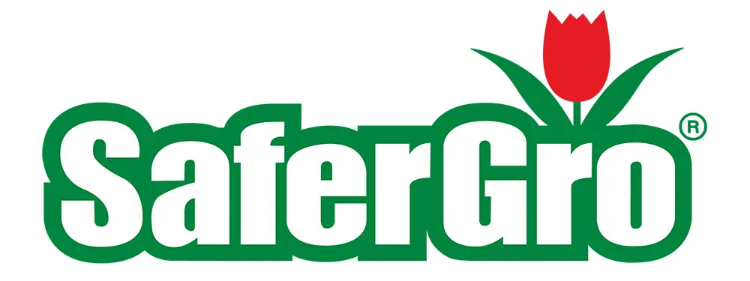Inicio
-
Creciendo para el futuro
-
La necesidad de productos biológicos: cómo los productos biológicos pueden salvar nuestro medio ambiente
La necesidad de productos biológicos: cómo los productos biológicos pueden salvar nuestro medio ambiente
En la actualidad, el costo de los fertilizantes sintéticos y los métodos de control de plagas a menudo implican el uso de productos químicos y no son rentables para el agricultor a largo plazo debido a sus efectos nocivos para la atmósfera y el medio ambiente. Estas prácticas destruyen la capa superficial del suelo, con la que se cultiva el 95% de los alimentos del mundo. Se estima que casi la mitad del suelo más productivo del mundo se ha perdido debido a la agricultura convencional. Al ritmo actual, toda la capa superficial del suelo restante desaparecerá en unos 60 años. Teniendo esto en cuenta, es muy importante que reduzcamos o eliminemos por completo las aplicaciones sintéticas en la agricultura.
La solución biológica
Nuestro suelo está lleno de una comunidad próspera de microbios que incluye hongos, algas, bacterias, protozoos, actinomicetos y nematodos. Se estima que una sola cucharadita de tierra puede contener entre 100 y 1.000 millones de bacterias beneficiosas. Al perder la capa superficial del suelo, perdemos esta diversidad del suelo, lo que conduce a la infertilidad de nuestra Tierra, necesaria para el crecimiento de los alimentos.
Para salvar el suelo de nuestro mundo y su diversidad, hemos incorporado estos microbios a nuestros productos biológicos que ofrecen una amplia gama de funciones para la agricultura y el medio ambiente. Estos microbios ayudan a las plantas con el movimiento del agua, el ciclo de nutrientes, la supresión de enfermedades y mucho más.
Los beneficios de los productos biológicos en la agricultura

Los productos biológicos ofrecen muchos beneficios. Los tres principales para muchos productores son el retorno de la inversión, la flexibilidad y el impacto ambiental.
Retorno - Los productos biológicos mejoran los sistemas alimentarios al permitir que los productores proporcionen productos saludables y asequibles a los consumidores. Los productores obtienen mayores rendimientos y rentabilidad, al tiempo que minimizan los gastos en insumos agrícolas.
Flexibilidad: los productos biológicos brindan flexibilidad en el momento de la aplicación debido a intervalos de reingreso (REI) y precosecha (PHI) más cortos. Los PHI cortos, en particular, permiten a los productores mantener mejor los cronogramas de envío.
Medio ambiente – Dado que muchos productos biológicos se someten a estrictas regulaciones y evaluaciones de impacto ambiental antes de su comercialización, los productores tienen la tranquilidad de que los productos son seguros y biodegradables en entornos naturales.
¿Qué son los productos biológicos?
Los productos biológicos se derivan de organismos vivos, plantas, organismos benéficos, animales y microorganismos. Estas soluciones naturales pueden complementar a los fertilizantes convencionales y otros productos agroquímicos o pueden utilizarse por sí solas como una estrategia eficaz de gestión integrada de cultivos. Se dividen en tres categorías principales:
- Bioestimulantes
- Biopesticidas/Biocontroles
- Biofertilidad
Bioestimulantes
Los bioestimulantes pueden ser sustancias naturales o sintéticas que se aplican a las semillas, las plantas y el suelo. Pueden contribuir a la salud, el crecimiento y la productividad de los cultivos.
Tipos de Bioestimulantes.
- Ácidos húmicos y fúlvicos
- Hidrosilatos de proteínas
- Compuestos inorgánicos
- Quitosano y otros biopolímeros
- Bacterias beneficiosas como Fulzyme
Biopesticidas
Los biopesticidas se derivan de especímenes vivos naturales, como microorganismos, plantas y animales. Son respetuosos con el medio ambiente, tienen un rango de acción limitado y modos de acción muy específicos, lo que los hace muy eficaces contra las plagas sin dañar las plantas ni añadir productos químicos nocivos a los suministros de agua. Elaborados con ingredientes naturales, los biopesticidas se consideran seguros y son menos peligrosos para el medio ambiente que los productos químicos o los pesticidas sintéticos.
Tipos de biopesticidas
- Biopesticidas bacterianos
Los biopesticidas bacterianos son más eficaces cuando son ingeridos por los insectos o sus larvas. Por ejemplo, el Bacillus thuringiensis ( Bt ) produce una toxina que se adhiere a las células estomacales de las larvas.
- Biopesticida fúngico
Los biopesticidas fúngicos, como Mildew Cure , actúan por contacto físico. Suelen estar compuestos por esporas de hongos y pueden aplicarse mediante pulverización foliar.
- Protectores incorporados a las plantas
Este tipo de biopesticidas, como Pest Out , se derivan de material genético incorporado a las plantas.
Biofertilizantes
Los biofertilizantes son productos que contienen microorganismos vivos que promueven el crecimiento de las plantas al aumentar el suministro o la disponibilidad de nutrientes primarios en el suelo. Los biofertilizantes son muy beneficiosos porque permiten una mayor disponibilidad de nutrientes en el suelo, promueven la absorción y el crecimiento de nutrientes por parte de las plantas, mejoran la salud del suelo y de las plantas y aumentan los rendimientos.

Tipos de Biofertilizantes
- Bacterias: bacterias fijadoras de nitrógeno
Los nódulos fijadores de nitrógeno se forman por la asociación de la bacteria Rhizobium que ayuda a fijar el nitrógeno atmosférico en formas orgánicas que pueden ser fácilmente absorbidas por la planta.
- Hongos: Micorrizas
Utilizado en Mycormax , este hongo ayuda a absorber el fósforo en el suelo y lo hace fácilmente disponible para la planta proporcionándole:
- Tolerancia a condiciones de sequía y salinidad.
- Resistencia a patógenos transmitidos por la raíz.
- Aumento del crecimiento y desarrollo de las plantas.
- Cianobacterias
Bacterias verdeazuladas que ayudan con el nitrógeno atmosférico y contribuyen a la materia orgánica del suelo.
Productos biológicos para todo tipo de cultivadores
Sin embargo, quizás lo más interesante y más importante para los productos biológicos de la capa superficial del suelo es que reducen las emisiones de gases de efecto invernadero causadas por los fertilizantes sintéticos. Estos productos que ofrece Safergro se destacan por su eficiencia ambiental y al mismo tiempo brindan altos rendimientos a los productores. Para los productores que buscan retornos de su inversión y productos que protejan el suelo y nuestro planeta en los años venideros, no busquen más que los productos biológicos de Safergro y JH Biotech.
